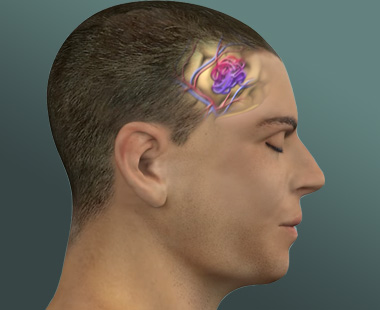
Minimally invasive brain surgeries
- Home
- Minimally invasive brain surgeries
Minimally invasive neurosurgery utilizes small, flexible, lighted tubes called endoscopes to visualize various parts of the brain, skull base, or spinal cord through small openings. Endoscopes serve as small microscopes, magnifying critical anatomical structures so the surgeon can easily see the various diseased areas requiring repair, removal, or replacement. A small incision (less than an inch) is needed for a neuroendoscopy. Smaller incisions and bony openings often result in less pain and shorter hospital stays. Because the use of endoscopes is much less intrusive into these anatomical structures than is conventional surgery, endoscopic neurosurgery is referred to as minimally invasive neurosurgery.
Many brain tumor operations that previously required a large scalp incision and large bony opening (craniotomy) can be performed as minimally invasive surgery – using smaller incisions and craniotomy openings.

What is head injury?A traumatic brain injury, also referred to an acquired brain injury, occurs when someone suffers a sudden…
read more
What is Brain Aneurysm?Brain aneurysm is an abnormal bulge in the brain's blood vessel. When it leaks or ruptures, it…
read more
What is a brain arteriovenous malformation ?Normally, arteries carry blood containing oxygen from the heart to the brain, and veins…
read more
What is Hydrocephalus?Hydrocephalus is commonly referred to as "water on the brain." The so-called "water" is actually cerebrospinal fluid (CSF),…
read more